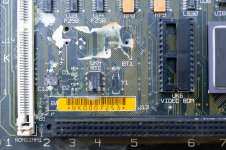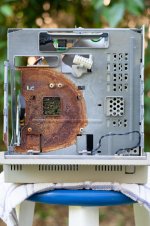JustG
Well-known member
I finally got brave and cracked the case on a SE/30 that was given to me. It had been sitting in a hot garage for a number of years.

Needless to say, maxcell bomb strikes again. It was getting dark so I don't have any more pictures. The chassis is pretty bad too. I'm inspired by @PotatoFi's SE thread so I'm going to attempt a repair. First round of soaking is under way now. Hopefully I can get it fixed, the guts were going to find their way into @maceffects clear case.

Needless to say, maxcell bomb strikes again. It was getting dark so I don't have any more pictures. The chassis is pretty bad too. I'm inspired by @PotatoFi's SE thread so I'm going to attempt a repair. First round of soaking is under way now. Hopefully I can get it fixed, the guts were going to find their way into @maceffects clear case.


